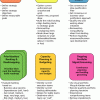Strategic advice to leverage new technologies
Technology is at the heart of nearly every enterprise, enabling new business models and strategies, and serving as the catalyst to industry convergence. Leveraging the right technology can improve business outcomes, providing intelligence and insights that help you make more informed and accurate decisions. From finding patterns in data through data science, to curating relevant insights with data analytics, to the predictive abilities and innumerable applications of AI, to solving challenging business problems with ML, NLP, and knowledge graphs, technology has brought decision-making to a more intelligent level. Keep pace with the technology trends, opportunities, applications, and real-world use cases that will move your organization closer to its transformation and business goals.
Recently Published
The proliferation of mobile devices for business use, in part fueled by the popularity of the "bring your own device" (BYOD) strategy, is helping drive corporate interest in enterprise app stores. To date, however, adoption of enterprise app stores has been limited for the most part to larger organizations.
Making Meetings Matter
Information Architecture: Dealing with Too Much Data
Information Architecture: Dealing with Too Much Data
One of the most popular articles ever written for the Harvard Business Review was authored by Frederick Herzberg in 1968.
Agile/Lean Portfolio Planning with Kanban
Too many organizations struggle today with the issue of constantly shifting priorities, causing many teams and individuals to work on several projects simultaneously. What was the number-one priority yesterday might not be the same today. So how can organizations maintain flexibility and effective responsiveness to changing business needs while providing their teams with the necessary focus to actually get something done?














